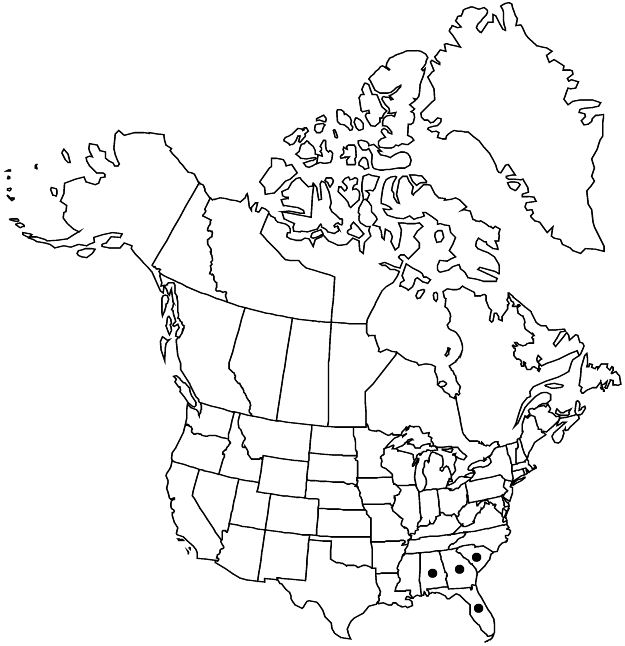Crataegus egens
Biltmore Bot. Stud. 1: 85. 1902.
Shrubs or trees, to 50 dm, branches strongly weeping (moving in slight wind). Stems: plants seldom flowering at less than 1 m; twigs: new growth white-canescent, 1-year old purple-brown, older darker or grayer, slender; thorns on twigs sometimes absent, straight or slightly recurved, 1–2-years old blackish to deep gray, fine, 1–2 cm. Leaves: petiole very slender, length 25–50% blade, winged distally, pubescent, glandular; blade short obtrullate to broadly obovate, 1–2(–3) cm (widest in distal 1/2, length-width mostly less than 1.4:1), thin, base cuneate to slightly rounded, lobes 1 or 2 per side distally, short, lobe apex usually subacute, margins obscurely crenate, sometimes crenate-serrate in distal 1/2, teeth glandular, veins 1 or 2 per side (exiting at or beyond at widest part), apex subacute, not glossy, surfaces sparsely hairy young, abaxial surface soon glabrate except on veins. Inflorescences 1- or 2-flowered; branches densely appressed white-pubescent; bracteoles few, linear, margins sessile-glandular, adaxially thin short-pubescent. Flowers 12–16 mm diam.; hypanthium white-tomentose; sepals triangular, 2–3 mm, margins glandular, abaxially pubescent; anthers ivory; styles 3. Pomes deep, dull yellow, sometimes with red cheek, suborbicular, 8–10 mm diam., glabrous; sepals appressed, sometimes late circumscissile; pyrenes 3.
Phenology: Flowering late Feb–early Apr; fruiting Jul–Aug.
Habitat: Pine barrens, brush, usually on sandy soil
Elevation: 10–100 m
Distribution

Ala., Fla., Ga., S.C.
Discussion
Crataegus egens is locally common in north-central Florida and Georgia with outliers occurring in Clark and Henry counties, Alabama, and Jasper County, South Carolina.
The long-petiolate leaves of Crataegus egens are very small and short-obtrullate to broadly obovate, thus proportionally wide. There is some variation in leaf lobing from acute to obtuse and even obscure. An additional characteristic of this species is the way in which extension-shoot leaves may flare outward toward the apex, their obtuse and large terminal end being quite deeply and somewhat irregularly lobed. Specimens with more elongated (1.4–1.6:1) leaves but more or less typically shaped distal ends may be referred to C. cirrata Beadle and are somewhat intermediate with C. floridana. Similar forms with leaves obovate-cuneate, lobes virtually absent, very obtuse and strongly crenate terminally but of uncertain taxonomic status, may key here. Uncommon short specimens of C. egens may be distinguished from C. lepida by leaves of that species being coriaceous and shiny with lobes almost or entirely absent.
Selected References
None.
